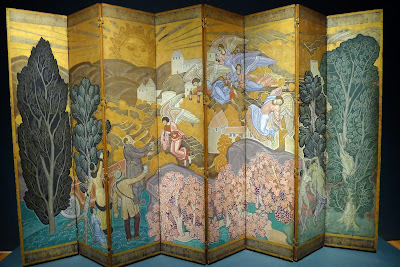 |
| Downtown Rockland, not exactly last week. (Rockland Main Street, Inc. website.) |
A few people have asked me why I—a person with a decidedly urban personality—like Rockland, ME so much.
If we were in Rockland this evening, we could attend a
lecture at the
Farnsworth comparing Giotto’s “Life of Christ” and Leonardo’s “Last Supper.” Rockland is a town of
7,297 people, in a county of
39,736—and this is the off-season.
To compare, I checked the schedule of Rochester’s Memorial Art Gallery. (Rochester has a population of 210,565, in a county of 744,344, and that’s the gallery of the well-regarded University of Rochester.) Tonight they are offering… well, nothing. But yesterday we could have done “Yoga at the MAG.”
Lyceums and Chautauqua assemblies were wonderful American 19th century phenomena, concentrated here in the Northeast and in the Midwest. In fact, the Chautauqua movement was founded just south of Buffalo in 1874, at the New York Chautauqua Assembly, which lives to this day as the Chautauqua Institute.
They served up a heady stew of evangelism, populism, education and entertainment. There was an assumption—now largely gone, alas—that the average man hungered for culture, education and entertainment. Today we watch reality TV instead, and most institutions honestly believe that nobody cares to think Big Thoughts anymore.
But back to Maine: the Farnsworth is a fantastic place, well worth a visit. But it’s just one of many fantastic places in this area, which is why I’m so anxious that you join me for one of my workshops. We’ll be painting at lighthouses, beside quiet coves, along rock-strewn beaches. We’ll be going to Monhegan to paint as well.
And if you ever doubt whether this teacher is worth her hire, let me tell you that I know where the bathrooms are.
August and September are sold out for my workshop at Lakewatch Manor in Rockland, ME. Join us in June, July and October, but please hurry! Check here for more information.






